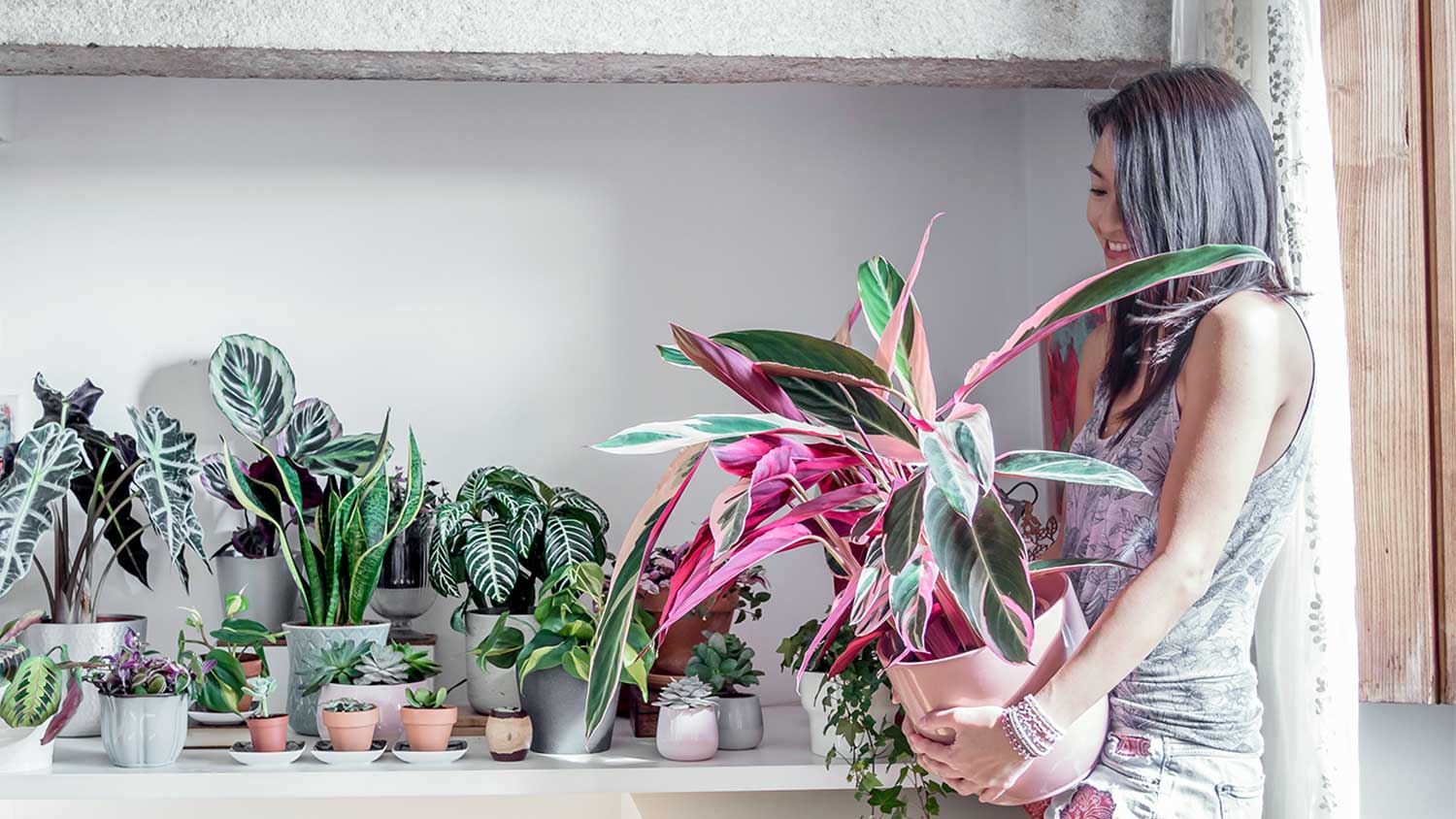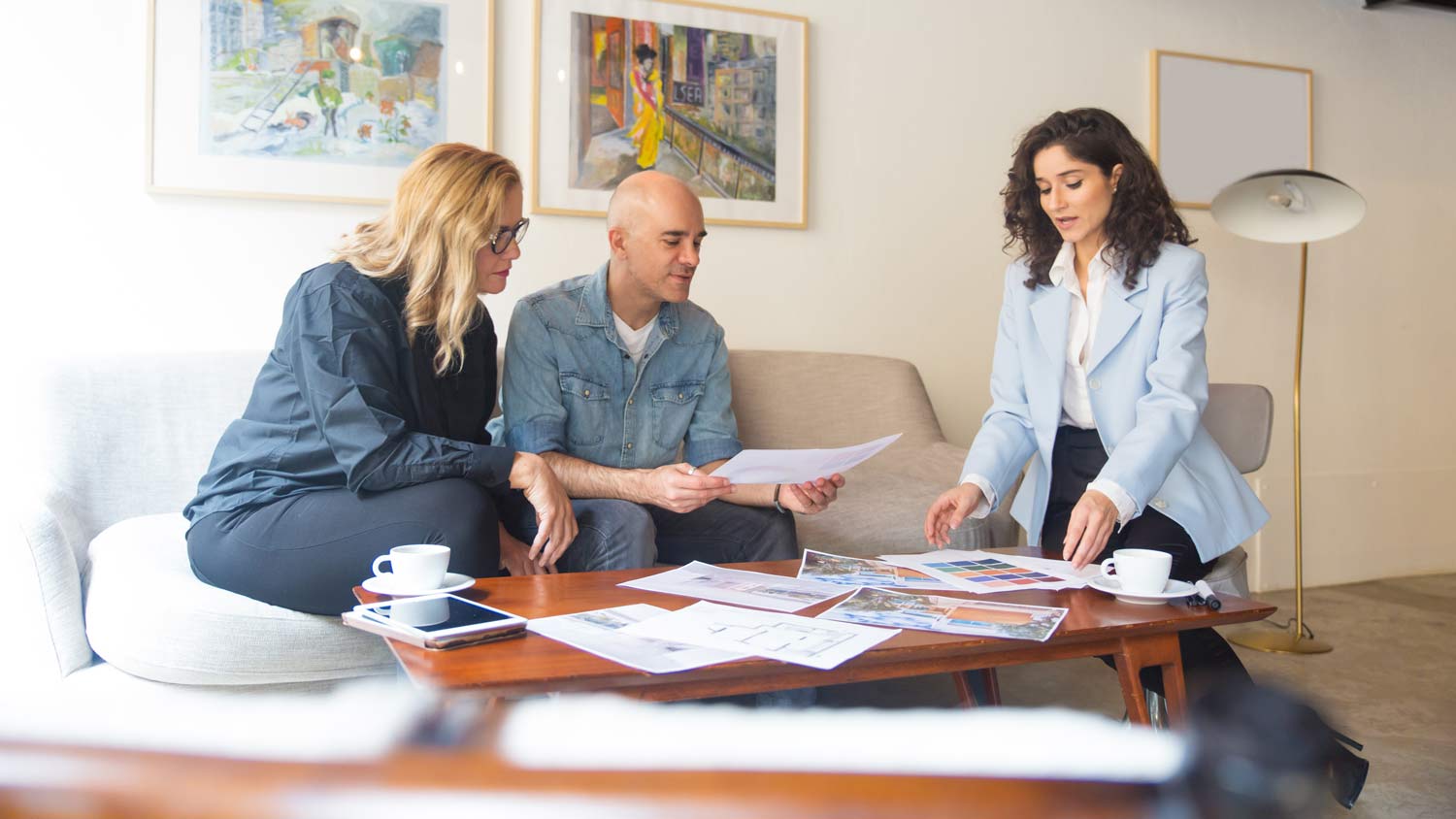
Discover the average feng shui consultant cost, what impacts pricing, and how to save on your consultation.
Bring balance and positive energy into your home with this ancient decorating practice


The Chinese practice of feng shui—which dates back to 2,000 B.C.—has been growing in popularity in Western culture over the years, promoting minimalism, balance, and an emphasis on nature. In other words, it’s a smart design principle if you’re looking for a grounded sense of calm in your home. Read on to learn how to freshen your living room and its interior design or practice slow decorating with feng shui principles in mind.
Feng shui is an ancient Chinese practice of decorating your home and arranging your furniture in order to promote positive chi—energy. The term translates to “wind-water” which is reflective of one of the main principles of designing your home with feng shui: balance and harmony. Chi is made of yin and yang elements, two opposing forces that one must balance in order to bring about wealth, supportive relationships, and professional success.
Create balance and open up your living room to positive chi with these tips.
In feng shui, clearing the space means getting rid of stagnant or bad energy. To do this, try smudging with palo santo, running an essential oil diffuser, or keep a bowl of fresh oranges out—orange peels are said to have bright, uplifting yang energy.
Piles of papers and knick-knacks can weigh heavily on the mind and overwhelm a space. Clear out clutter, donate what you don’t need, and organize your items neatly on bookshelves
What do you mostly use your living room for? The vibe you wish to cultivate should depend on whether you use the space for entertaining, for TV watching with family, or if you rarely use it at all. In feng shui, color is heavily tied to energy; the practice uses a bagua map to outline the basic principles of this belief. These are the eight bagua areas, with one center area, for a total of nine—our lucky number:
1. Tai Qi
Quality: Health
Element: Earth
Colors: Yellows, oranges, browns
2. Xun
Quality: Wealth
Element: Wood
Color: Purple
3. Dui
Quality: Children
Element: Metal
Color: White
4. Kan
Quality: Career
Element: Water
Color: Clack
5. Zhen
Quality: Family
Element: Wood
Colors: Greens, blues
6. Qian
Quality: Travel
Element: Metal
Color: Gray
7. Li
Quality: Fame
Element: Fire
Color: Red
8. Gen
Quality: Knowledge
Element: Earth
Color: Dark blue
9. Kun
Quality: Love and relationships
Element: Earth
Color: Pink

You should look for ways to balance these elements; you don’t, for instance, want too much fire (red) in the space, which can create feelings of aggression. Balance it out with water.
Open windows and run fans to allow natural air and energy to circulate. Nine is a lucky number in feng shui, so open the windows at least once a day for nine minutes to allow new energy into the space.
Remove any heavy curtains on your windows and, if you have blinds, make sure to raise them each day to allow a healthy dose of natural sunlight into the room. This promotes warmth and positive energy. If your living room’s windows are small, hang mirrors around the space to reflect and enhance the light you get.
The sofa should be placed at the commanding position, which is the central sitting or resting area in the room where you can receive the positive energy you are creating through your feng shui design. You should place your couch in a spot where you can see the door without being directly in line with it.
It’s important to choose a focal point in your living room, but choose one that will promote connection, conversation, and overall good vibes, such as a fireplace, a piece or art, or a unique floral arrangement. If your fireplace is the main focal point, make sure to balance the fire energy out with other elements, such as water; you could add paintings or photographs of waterfalls, lakes, or other natural bodies of water.
Feng shui is about finding balance and harmony, so mix up the textures in the room. Consider a coffee table with a metal base and a wood top, or place soft, cozy pillows on the sofa to balance out other materials. Buy furniture with curves and rounded corners so negative energy can flow through the space; the sharp corners of bookcases can be softened with the addition of plants.
For energy to move around the room naturally, make sure there are clear, uncluttered pathways in and out of the space; in other words, make sure your toddler’s toys are picked up after use, and don’t let that chair jut out in front of the hallway. In addition, make sure the backs of furniture are not exposed to doors or windows.

Plants promote lively energy into any room, and help purify the air. They can also offer balance and organic texture to a room that is overly angular. If you don’t get lots of natural sunlight, consider a low-maintenance plant such as the ZZ plant or a snake plant.
If you’re feeling a little lost, there are consultants who specialize in feng shui and can bring their expertise to your living room to create the perfect level of balance and harmony. All you have to do is sit back and toast to your good health and wealth.
From average costs to expert advice, get all the answers you need to get your job done.

Discover the average feng shui consultant cost, what impacts pricing, and how to save on your consultation.

Discover average bedroom addition costs, including cost factors, labor rates, and tips to help you budget for your new bedroom addition project.

The cost to replace trim depends on factors such as style, material, and whether you hire a pro. Find out what your budget could look like for this project.

Create a stunning and functional home or remodel with an interior designer. Follow these common interior design questions to prepare for working with a pro.

Discover the cost to install a built-in wardrobe. Learn about average prices, installation factors, and ways to save on your custom storage project.

If you’re getting ready to install some trim or molding inside your home, here are some of the questions you should expect to discuss with a pro.